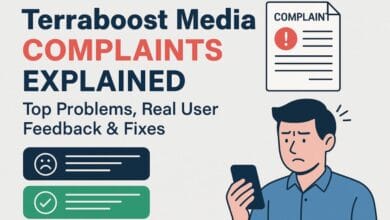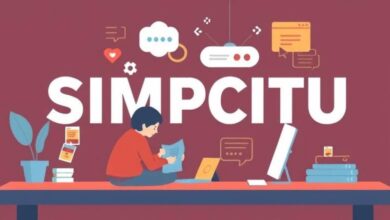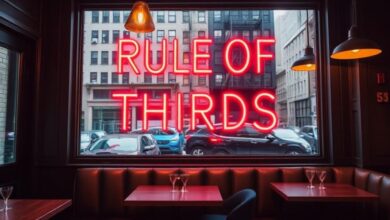
InfluncersGoneWild: The Rise, Risks, and Realities of Viral Fame
Introduction Of InfluncersGoneWild: The Influence of Scandalous Fame
In the age of social media, influencers have become more than just content creators—they are the new celebrities. But what happens when an influencer’s rise to fame is marred by scandal or outrageous behavior? The term InfluncersGoneWild refers to those social media stars who, whether intentionally or unintentionally, find themselves embroiled in controversy, scandal, or extreme behavior that often skyrockets their popularity, albeit for the wrong reasons.
From Logan Paul’s infamous Su*icide Forest video to Tana Mongeau’s TanaCon disaster, influncersgonewild have sparked debates, polarized audiences, and often faced severe career setbacks. In this article, we will explore the rise of influencers who engage in outrageous behavior, the risks associated with them, and the implications for brands and audiences alike. Let’s dive into why some influencers opt for extreme content, how it affects their careers, and the far-reaching consequences on the brand landscape.
Understanding the “Gone Wild” Phenomenon
What Triggers Extreme Behavior?
The concept of InfluncersGoneWild isn’t new, but the rise of social media platforms has dramatically accelerated this trend. While some influencers start with authentic content, others opt for more controversial or shocking content to gain visibility. What triggers this extreme behavior?
- Algorithmic Rewards for Controversy: Platforms like YouTube, TikTok, and Instagram reward content that garners high engagement. The more controversial or shocking the content, the higher the chance it will be pushed to the top of people’s feeds, generating more views, shares, and comments.
- The “Clout Treadmill”: The need to maintain visibility and relevance often drives influencers to escalate their content to maintain the clout they’ve earned. This “clout treadmill” makes it hard for influencers to step back once they’ve built a brand on outrageous content. They constantly feel the pressure to go bigger, bolder, and more extreme.
Audience Role: Hate-Watching, Meme Culture, and Parasocial Loyalty
Another significant factor is the audience’s role. Viewers, especially younger generations, are often as invested in influencers’ lives as they are in fictional characters. The concept of parasocial relationships—one-sided relationships where fans feel deeply connected to influencers—plays a role in both the rise and fall of influncersgonewild. Many fans are quick to forgive their favorite creators, while others engage in “hate-watching,” where they follow influencers simply to criticize them, but inadvertently contribute to the viral nature of their content.
The Psychology Behind InfluncersGoneWild
Validation-Seeking: Studies on Narcissism and Social Media
Many influencers turn to social media as a platform for validation, with some showing narcissistic traits, as indicated by psychological research. Platforms that focus on likes, comments, and shares provide immediate gratification and fuel narcissistic tendencies. Social media fame can be intoxicating, and for some, it becomes all-consuming.
Studies have shown that narcissism is common among individuals who crave constant attention, validation, and admiration. Influencers who thrive on controversy often demonstrate behaviors linked to this need for self-affirmation. They are less concerned with the long-term consequences and more focused on the immediate benefits of their online popularity.
Burnout & Desperation: The Pressure to Stay Relevant
The pressure to stay relevant in an ever-saturated market is immense. Influncersgonewild face constant competition, not only from other influencers but from algorithms that decide their fate. This constant need to create fresh and engaging content often leads to burnout. Many influencers resort to extreme or sensational behavior as a coping mechanism to stay in the limelight. Desperation sets in when they realize that their moment of fame might be fleeting, and they often do whatever it takes to keep the audience’s attention.
Most Notorious Cases
Logan Paul: The Su*icide Forest Incident
Date: December 31, 2017
Place: Aokigahara Forest, Japan
Name: Logan Paul
Logan Paul’s career faced a massive blow when he posted a video from Japan’s Aokigahara Forest, also known as the “Su*icide Forest,” where he filmed a deceased body in distressing circumstances. The backlash was immediate, and his actions led to widespread condemnation. As a result, YouTube implemented a series of policy changes and even suspended his ad revenue for a period. However, after a public apology and rebranding, Logan Paul continued to have a successful career, showcasing the possibility of recovery for influncersgonewild.
Belle Delphine: Shock Marketing
Date: 2019
Place: Global (Mostly US and UK)
Name: Belle Delphine
Belle Delphine’s brand revolves around shock value, from her “Gamer Girl Bathwater” stunt to selling explicit content on platforms like OnlyFans. Despite her controversial marketing strategies, Belle Delphine managed to turn her notoriety into profitable rebranding. She successfully leveraged her fame for merchandise and adult content sales, capitalizing on the audience’s fascination with her provocative stunts.
Andrew Tate: From Bans to Legacy
Date: 2022
Place: Global
Name: Andrew Tate
Andrew Tate, known for his misogynistic views and controversial online presence, found himself banned from multiple social media platforms due to violating community guidelines. Despite facing legal troubles and severe backlash, Tate’s followers, known as the “Top G” community, continue to support him, fueling his financial success and enabling him to sell products and services to his loyal fanbase, even post-ban.
The Risks and Effects on Brands
Reputation Damage
When brands partner with influencers, they implicitly associate themselves with the influencer’s persona. If that influencer engages in controversial or inappropriate behavior, it can significantly damage the brand’s image. Pepsi faced backlash when they partnered with Kendall Jenner for a protest-themed advertisement that was widely criticized as tone-deaf. Similarly, YouTube’s association with Logan Paul led to consumer boycotts, forcing the platform to reconsider its policies.
Financial Losses
Controversial influncersgonewild can also cause financial damage. Companies like Tesla, which severed ties with Kanye West after his antisemitic comments, lost considerable reputation. Stock dips are common when publicly traded companies are linked to scandals. The influencer marketing ecosystem can suffer losses when brands realize that the cost of association is higher than the potential revenue.
Long-Term Trust Erosion
Repeated misconduct by influencers erodes the trust audiences place in brands. Influencers who repeatedly cross boundaries create a sense of distrust, and brands associated with such influencers risk losing customer loyalty. The Fyre Festival debacle is a prime example of how influencer marketing credibility can be damaged. The festival’s disastrous outcome led to the questioning of influencer partnerships in the luxury event sector.
Why Some Brands Still Take the Risk
Controversy = Visibility
Despite the risks, some brands choose to partner with controversial influencers because it guarantees visibility. Balenciaga’s shock campaigns often raise eyebrows, but they generate substantial media attention, both positive and negative. In some cases, controversy is used as a marketing tool, with brands intentionally courting backlash for visibility.
Loyal Fanbases
Andrew Tate, despite facing bans and legal troubles, continues to enjoy a loyal fanbase that supports his brand. Brands can still profit from controversial influencers if they tap into niche markets where fans value the influencer’s authenticity (even if it’s divisive). Companies like Barstool Sports have been known to use “cancel culture” as a badge of honor, benefiting from the rebellious image they project.
Legal & Ethical Consequences
Platform Bans: Shadowbanning and Content Removal
Influencers who cross the line risk being banned or shadowbanned by platforms like TikTok and Instagram. These platforms enforce strict community guidelines and are quick to take down content that violates their terms of service. However, the damage is already done; influencers often gain viral fame during their ban, which can further fuel the controversy.
Lawsuits & Fines
Influncersgonewild also face legal consequences. The Federal Trade Commission (FTC) has fined influencers for failing to disclose paid promotions. The rise of influencers with significant followings has caught the attention of regulators, and influencers now must adhere to stricter advertising guidelines to avoid hefty fines and legal repercussions.
How to Avoid the “Gone Wild” Trap
For Influencers
- Diversify Content: Influencers should avoid relying solely on shock value. Creating diverse content that is both entertaining and meaningful can help build a more sustainable and positive brand.
- Crisis PR Strategies: Influencers who face controversies should have a crisis PR plan in place. David Dobrik, for example, managed to rebrand himself after facing allegations, showcasing the power of recovery with the right approach.
For Brands
- Vetting Influencers: Brands need to conduct thorough background checks on influencers before entering partnerships. A history of controversial behavior could be a red flag.
- Morality Clauses: Contracts with influencers should include morality clauses, which allow the brand to terminate the agreement if the influencer engages in behavior that negatively impacts the brand.
FAQs About InfluncersGoneWild
Q1. Can influncersgonewild recover from scandals?
Answer: Yes, recovery is possible, but it depends on the influencer’s response. Shane Dawson, for example, faced public backlash but managed to re-establish his brand through a more measured and reflective approach. On the other hand, influncersgonewild like Laura Lee, whose apology wasn’t well-received, struggled to regain their former popularity.
Q2. Do brands get refunds from problematic influencers?
Answer: Refunds are rare. Prevention is the best strategy for brands. Instead of seeking reimbursement, brands should focus on ensuring that influencer partnerships align with their values before committing to sponsorships.
Q3. What should brands consider when selecting an influencer for a campaign?
Answer: Brands should evaluate an influencer’s audience, engagement rates, and past behavior. Influencers should have a positive public image, and brands must be clear about what values align with their own. It’s also important to assess whether the influencer’s content resonates with the target audience.
Q4. Are there any alternatives to influencer marketing?
Answer: Yes, brands can explore alternative marketing strategies such as content marketing, email marketing, and direct partnerships with trusted individuals or organizations. These strategies can sometimes deliver more authentic results without the risks associated with influencer marketing.
Q5. How does cancel culture impact influencer careers?
Answer: Cancel culture can have a severe impact on an influencer’s career. If an influencer faces significant backlash, they may lose sponsorship deals, followers, and even platform access. However, some influencers manage to bounce back by adjusting their brand or shifting their content strategy, while others see their careers end entirely.
Q6. Should influencers apologize for their controversies?
Answer: An apology can help, but it must be sincere and backed by action. Influencers who take accountability for their actions, show remorse, and make efforts to change their behavior have a better chance of regaining public trust. Simply offering a generic apology may not be enough.
Conclusion
The InfluncersGoneWild phenomenon is a double-edged sword. While influencers can gain viral fame through scandalous behavior, the risks are substantial, both for the influencers and the brands that associate with them. Brands must weigh the benefits of visibility against the potential damage to their reputation, while influencers must recognize the dangers of building a career based on shock value.
The future of influencer marketing depends on the careful balance between authenticity and controversy. As the industry evolves, one key question remains: Should brands be held accountable for their influencers’ actions?
CTA: “Which scandal changed how you view influencer marketing? Comment below!”






